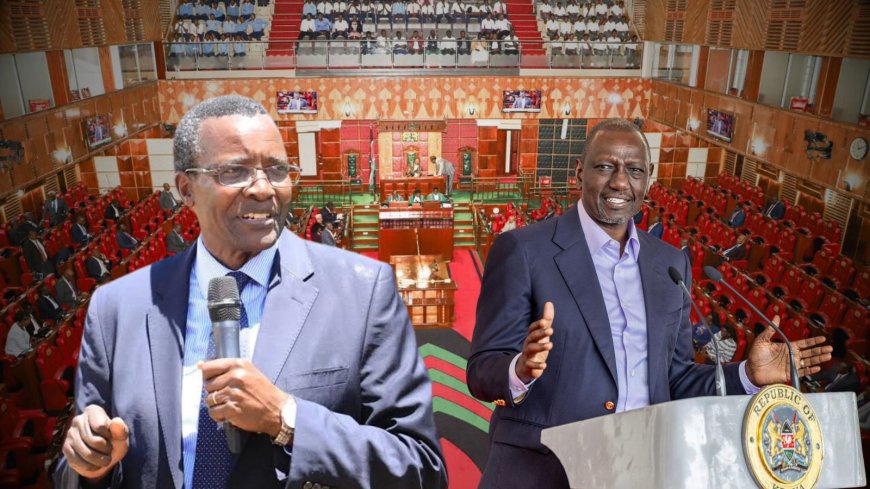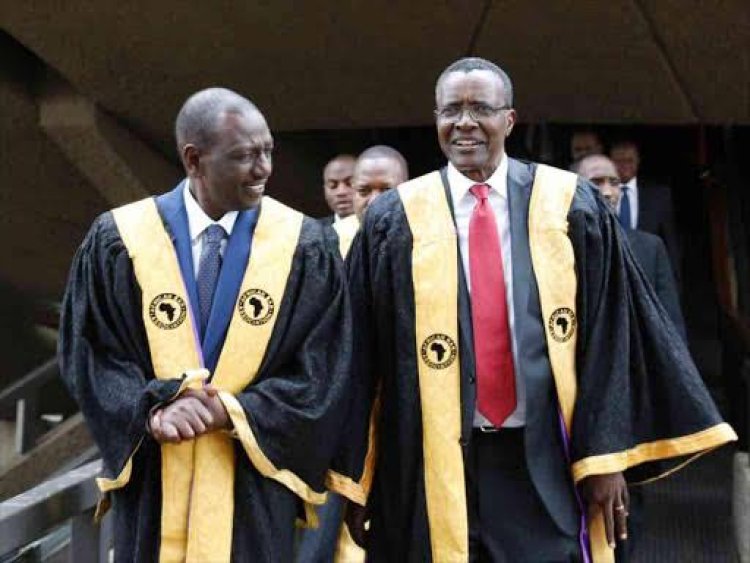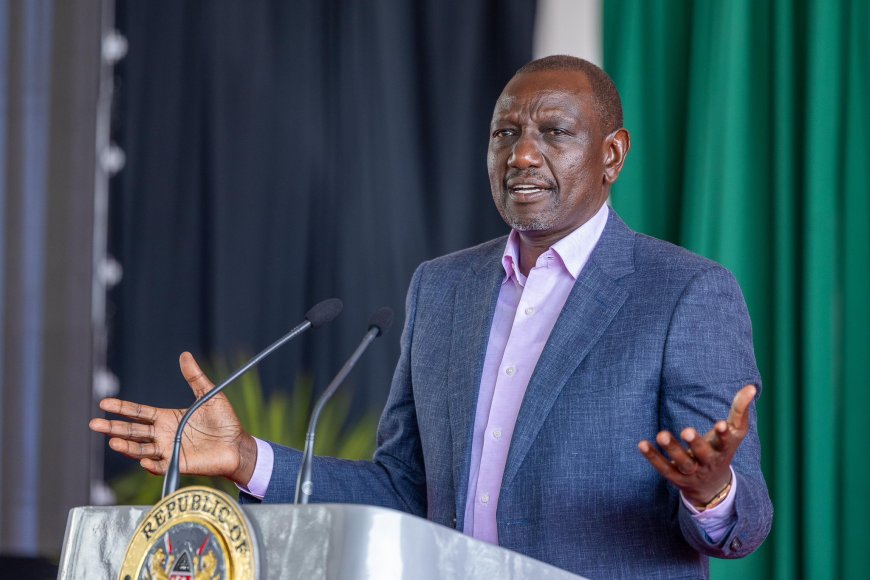Ruto Should Have Been Impeached By Now: Maraga Bashes Parliament
Maraga said Kenyans are increasingly fed up with the government and pushing for change

Former Chief Justice David Maraga on Tuesday, July 15, slammed Parliament, accusing it of being compromised and unable to keep President William Ruto in check.
In a Citizen TV interview on Tuesday, July 15, 2025, Maraga said Kenyans are increasingly fed up with the government and pushing for change and that Parliament should have impeached the Head of State by now.
He added that the growing calls for Ruto to step down show just how unhappy people are with how the country is being run.
“What these people are saying in one term is that they are tired of Ruto’s governance system, and they are asking him to resign. What option is there for Parliament to do its work? Parliament has the power to impeach the President. The President has violated countless provisions of the Constitution,” Mararga said.

President William Ruto and former CJ David Maraga during a past event. /FILE
Maraga insisted that Parliament not only has the authority but also the duty to impeach a President who violates the Constitution. He pointed out that Ruto’s administration has broken the law multiple times, saying that in a functioning democracy, the President would’ve already been ousted.
But, according to Maraga, Parliament isn’t likely to act. He argued that MPs have ditched their independence and aligned themselves with the executive, ignoring their role as the people’s representatives.
He concluded that if Parliament was actually doing its job, Ruto would be facing serious accountability. Instead, due to political loyalty and self-interest, Maraga said Parliament has completely failed the country.
“If Parliament were doing its work, the President would not be in office today. The shortest route for this is for the President to resign, or if he fails to resign, Parliament is supposed to impeach him, but Parliament will not do that because it is captured,” he added.
Maraga is one of the opposition leaders eying the top seat in 2027. He officially declared his bid for the presidency during an NTV interview on Wednesday, June 18.
Many Kenyans have been calling for Parliament to act decisively by removing President Ruto from power in line with the Constitution, with the same urgency and speed that was in place when Rigathi Gachagua was removed as Deputy President in October 2024. But this is easier said than done.
How To Impeach A President Of Kenya
In Kenya, impeaching a sitting President is a two-stage constitutional process outlined under Article 145 of the 2010 Constitution.
The process begins in the National Assembly, where any Member of Parliament (MP) can introduce a motion to impeach the President. This motion must be based on specific grounds: a gross violation of the Constitution or any other law, serious reasons to believe the President has committed a crime under national or international law, or gross misconduct.
For the motion to proceed, at least one-third of all MPs must support it for debate. Once debated, it must then be passed by at least two-thirds of all National Assembly members.
If the motion succeeds, it doesn’t immediately remove the President from office but triggers the next stage of the process in the Senate.
The Speaker of the National Assembly then forwards the resolution to the Speaker of the Senate. Within seven days, the Senate must convene to investigate the allegations.
A special committee of 11 senators is formed to conduct a detailed inquiry into the charges, should the Senate choose to. The President is given a chance to defend themselves during this process.
If the special committee finds the charges unsubstantiated, the impeachment process ends there. However, if the committee confirms the charges, the matter goes to the full Senate for a vote. For the impeachment to be upheld, at least two-thirds of all Senators must vote in favour.
If the Senate votes to impeach, the President is officially removed from office, and the Deputy President automatically takes over as the new head of state. The process is designed to serve as a constitutional safeguard against abuse of power, though in practice, political interests often influence its success or failure.







